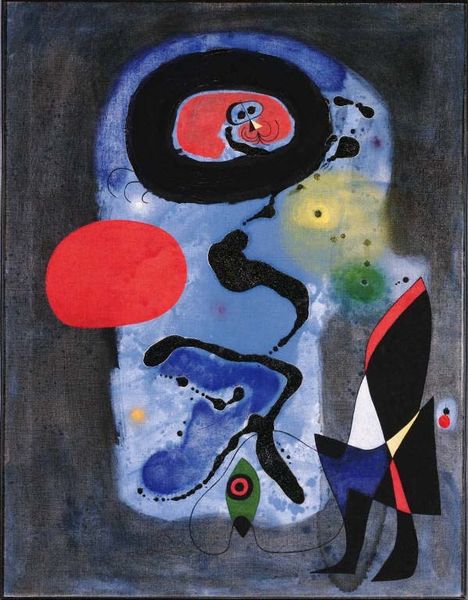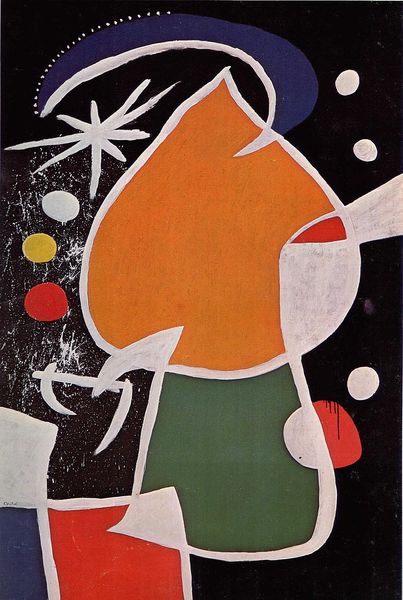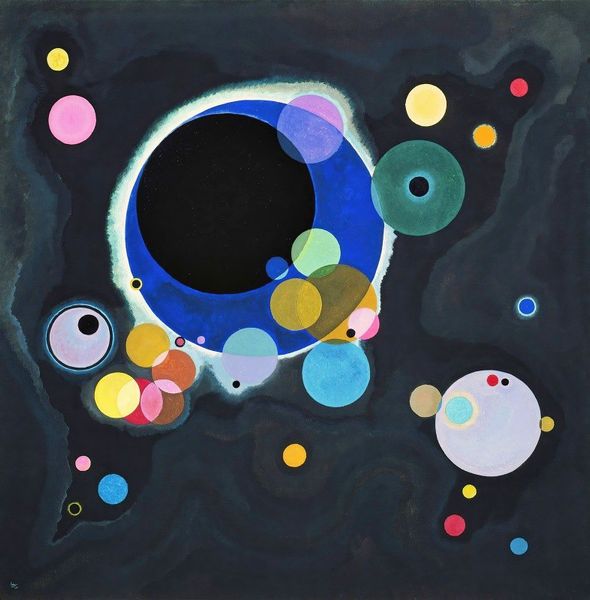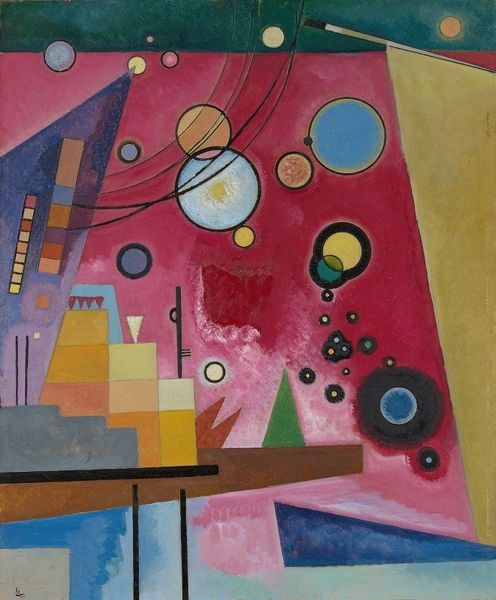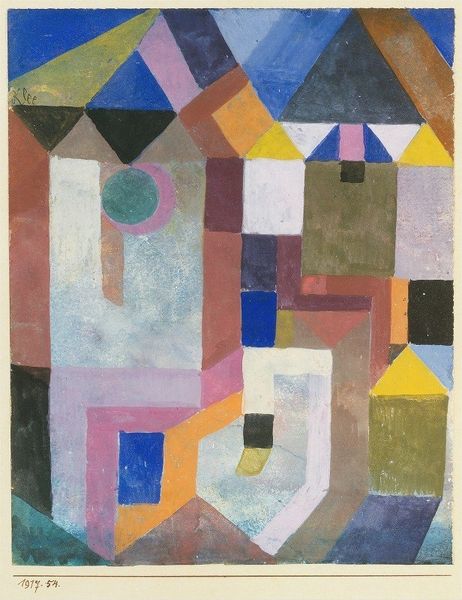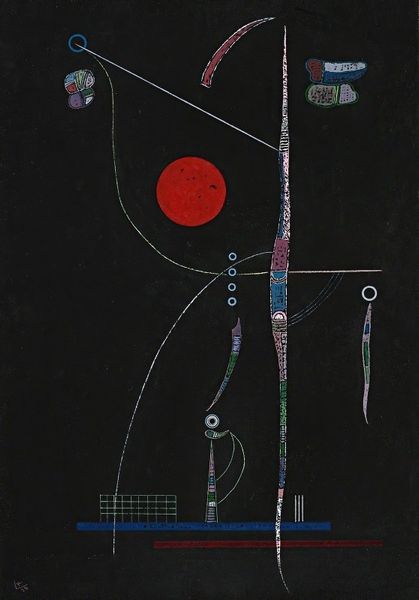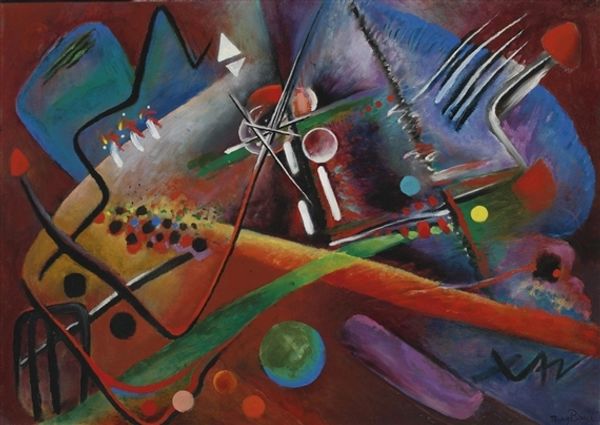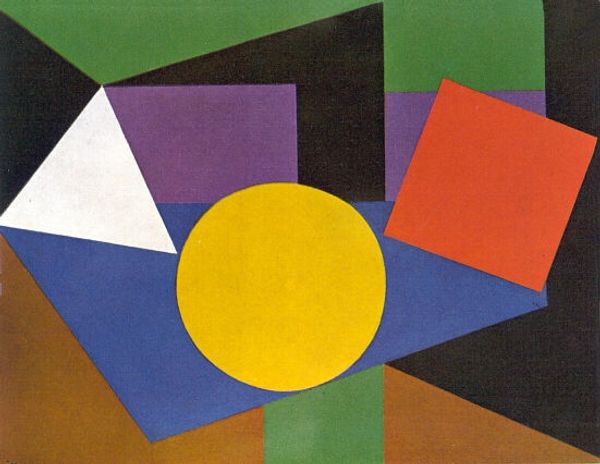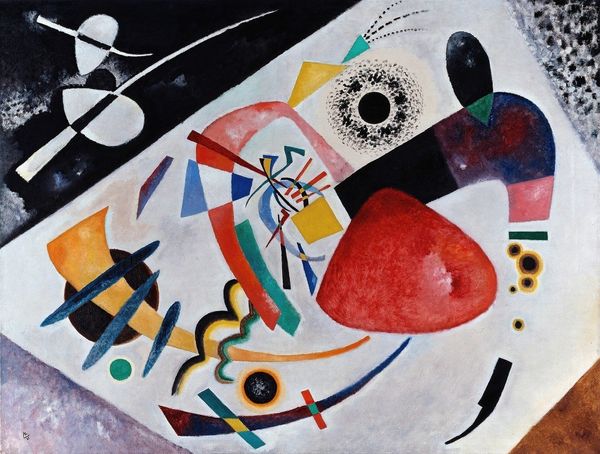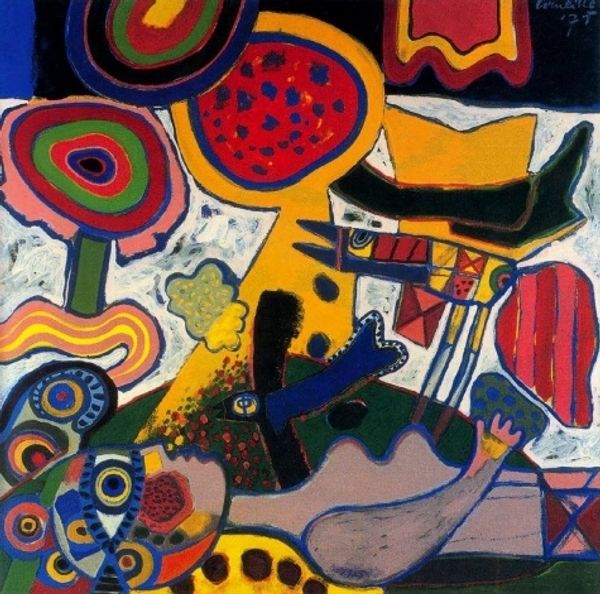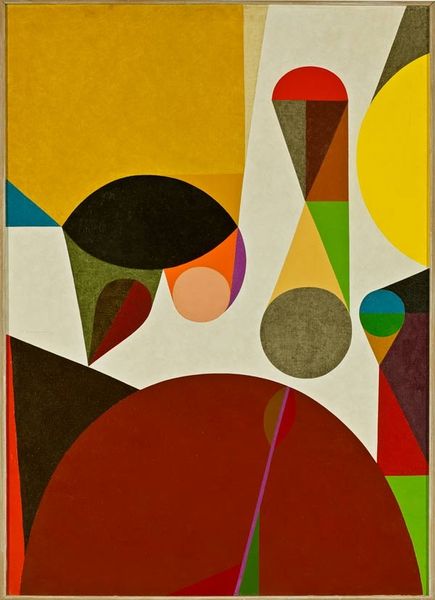
Copyright: Public domain
Curator: Welcome. We are standing before Wassily Kandinsky's "Accent on Rose," an oil on canvas completed in 1926, currently housed at the Musée National d'Art Moderne in Paris. Editor: My first impression is a kind of celestial dance, all these floating shapes against that dark background. It feels both energetic and deeply calming. Curator: Observe how Kandinsky orchestrates the interaction between geometric forms. The tilted square provides a field for the interplay of circles, squares, and a muted, though not quiet, color palette. It represents Kandinsky’s ongoing investigation into the spiritual in art and the possibility of total abstraction. Editor: Absolutely, the rose, or what could be a rose, serves as the visual anchor, doesn’t it? It makes me think of universal symbols of love, life, and the transient nature of beauty in full bloom. But around the rose blooms a flurry of symbolism, all sorts of unconscious connections bloom! Curator: Consider the structuring principles at work. Notice how each shape asserts itself—color creates distinct relationships within a matrix. There's dynamism, though this exists largely within the confines of the plane and without direct external references. The 'rose' itself is rendered not through imitation, but by purely abstract formal methods. Editor: Yes, its visual harmony also reflects an echo chamber of myth. In alchemy, roses represent rebirth; in Christianity, it's often associated with Mary. I can almost imagine it representing the search for knowledge and divine grace amid these volatile modern times! Curator: Agreed, though from the perspective of pure form, Kandinsky moves us away from denotative associations. Editor: Still, the "Accent on Rose" becomes an emotionally charged mandala. Curator: So true. Overall the visual interplay of its formal elements—the composition, chromatic tension—allow it to stand outside of symbolic readings. The shapes generate affects. Editor: Perhaps, the work speaks more to the inner spirit of the age— the angst and hope of Modernism captured in simple gestures of geometrical color fields. I must say, I can gaze into its depths forever. Curator: Agreed; it's the way the artist balanced order and the chaotic impulse through visual language; quite extraordinary.
Comments
No comments
Be the first to comment and join the conversation on the ultimate creative platform.
